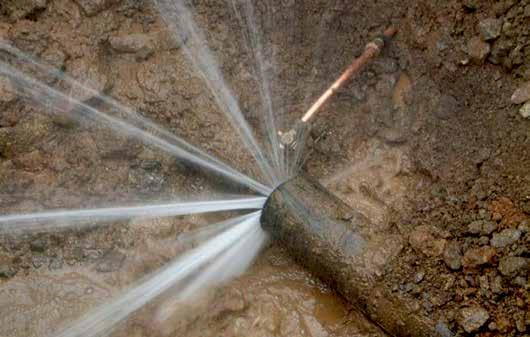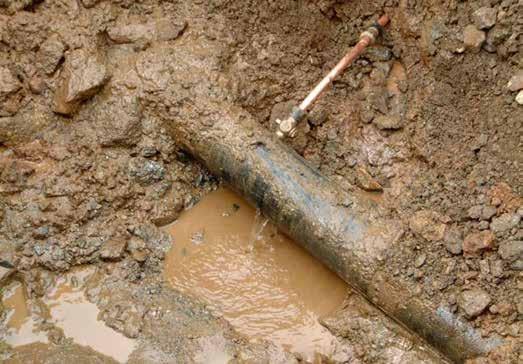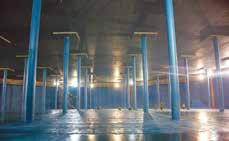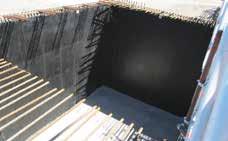
6 minute read
Starting with the basics
While reducing municipal water losses is not complicated, there is no single water conservation and demand management (WC/WDM) intervention that will always provide the best savings at the least cost. Instead, a dedicated and methodical approach is needed to achieve real and sustainable savings.
South Africa’s National Water and Sanitation Master Plan (NW&SMP) highlights the fact that the country could face a projected 17% water deficit by 2030. Essentially, if demand continues to grow at current levels, the deficit between water supply and demand could be between 2.7 and 3.8 billion m 3 /annum by the end of the next decade.
Advertisement
As South Africa faces increasing water stress, WC/WDM will have a key role to play in ensuring long-term water security.
Dr Ronnie McKenzie, former chairman of the IWA Water Loss Specialist Group, notes that many municipalities struggle to reduce the often-high levels of water losses in their reticulation systems. He has written a guide to the reduction of water losses from municipal water supply systems, which is available freely from the Water Research Commission. Many of the issues discussed below have been summarised from his report*. Dealing with losses The NW&SMP points out that 35% of municipal water is lost through leakage, resulting in an annual loss of around 1 660 million m³. At the current average unit cost of over R10/m³, this amounts to approximately R17 billion in losses for municipalities throughout South Africa each year.
Given the fact that many municipalities are dealing with billions in lost revenue due to economic impacts of the Covid-19 pandemic and subsequent lockdown,
Underground leak running at high pressure (Credit: Ken Brothers)
Underground leak running at low pressure (Credit: Ken Brothers)

addressing water losses presents an opportunity to reduce financial losses. And for municipalities facing drought, such as those in the Eastern Cape, it presents an ideal opportunity to recover much needed water resources.
McKenzie notes that municipalities should begin with addressing the basic issues first. “Until the basic issues have been properly addressed, there is relatively little benefit to be gained by introducing some of the more expensive and sophisticated measures.” he notes.
However, even addressing the basics requires a budget and real effort from the municipality, often involving the excavation of pipelines and repairs where necessary.
Where to start According to McKenzie, repairing visible and reported leaks (preferably within 24 hours) is one of the most obvious and basic interventions that should be implemented as a top priority. “The repair of such leaks needs no financial justification or preliminary assessment to determine if it is worthwhile. It is the most obvious and costeffective measure that any municipality can undertake and will always be worthwhile.”
However, active leakage control (searching for below-ground, unreported leaks) is not always cost-effective. While it may be worthwhile in an area known to have high leakage or dolomitic areas where leaks will never surface, visible leaks should be repaired before any leak location activities are undertaken to search for new and unreported leaks.
McKenzie also notes that active leakage control need not always involve highly expensive or sophisticated equipment. In most cases, a well-trained, experienced leak detector with a basic listening rod will be more than sufficient.
Throwing big budgets at leak location and repair should be carefully considered, especially in cases where the underlying problem is high water pressure or a network that is no longer viable.
Effective pressure management Pressure management is one of the most important WC/WDM interventions to be considered. This is especially the case in South Africa, where municipal water supply systems are often operated at relatively high pressures.
“Leakage is driven by pressure, and while it must be acknowledged that pressure management is not the answer in every case, it is often one of the most costeffective measures to reduce leakage that can be considered,” says McKenzie.
Pressure management can take many forms, ranging from the basic fixed outlet pressure control to some form of more sophisticated hydraulic or electronic control, which is often referred to as ‘smart control’ or ‘advanced pressure control’.
South Africa was one of the first countries in the world to adopt the principles of advanced pressure control initially developed in the UK back in the early 1990s, and several projects have since proved its effectiveness. Notably, aggressive pressure management was integral to Cape Town’s management of the ‘Day Zero’ drought.
If the water pressure in a system can be reduced, even for a short period during times of low demand, the water leakage from the system will be reduced.
However, McKenzie stresses that in order to reduce leakage through pressure management, it is necessary to reduce the water pressure without compromising the level of service for consumers and fire-fighting. Most systems are designed to provide a certain minimum level of service in the system during the peak demand period.
Repair and replacement As water infrastructure ages, it becomes necessary to repair and replace pipelines. However, pipe replacement is often the most expensive water loss reduction intervention and is generally the measure of last resort.
McKenzie explains that there are currently two main schools of thought when it comes to pipe replacement in South Africa. One approach that was implemented by eThekwini Municipality was the ‘blanket replacement’ approach, where all pipes of a certain type and/or age were replaced. In this case, all asbestos cement pipes in the network were replaced – a massive undertaking at an estimated cost of over R1 billion.
An alternative approach was introduced by the City of Tshwane. Here, certain types and ages of pipes are replaced according to the incidence of burst pipes as recorded and monitored on the metro’s management information system. This approach involves the replacement of

pipes as they deteriorate to a level where the occurrence of new leaks becomes so high that the pipes are effectively no longer suitable for use. The selective replacement is more appropriate in cases where budget constraints prevent any form of blanket replacement.
Tshwane’s approach requires the collection and analysis of all burst information that is part of a sophisticated GIS/MIS system. According to McKenzie, such information and statistics on pipe bursts is invaluable when used to determine whether it is time to replace a section of pipe and is one of the factors contributing to the lower than average leakage in Tshwane.
He stresses that great care should be taken when considering any largescale pipe replacement project and recommends some form of pilot project first. Some pipe replacement projects have been undertaken where the leakage has in fact increased after the pipes have been replaced.
“Pipe replacement is the most expensive water loss reduction intervention in most cases, and it should be considered as the action of last resort after other options including pressure management and leak repair have been exhausted,” says McKenzie.
Theoretically, some level of physical leakage in a system cannot be avoided. However, reducing losses as far as possible is an important exercise – especially in a country like South Africa, where physical leakage is generally high.
*Mckenzie, R. Guidelines for Reducing Water Losses in South African Municipalities Report TT 595/14 to the Water Research Commission, ISBN 978-1- 4312-0565-3, August 2014)










